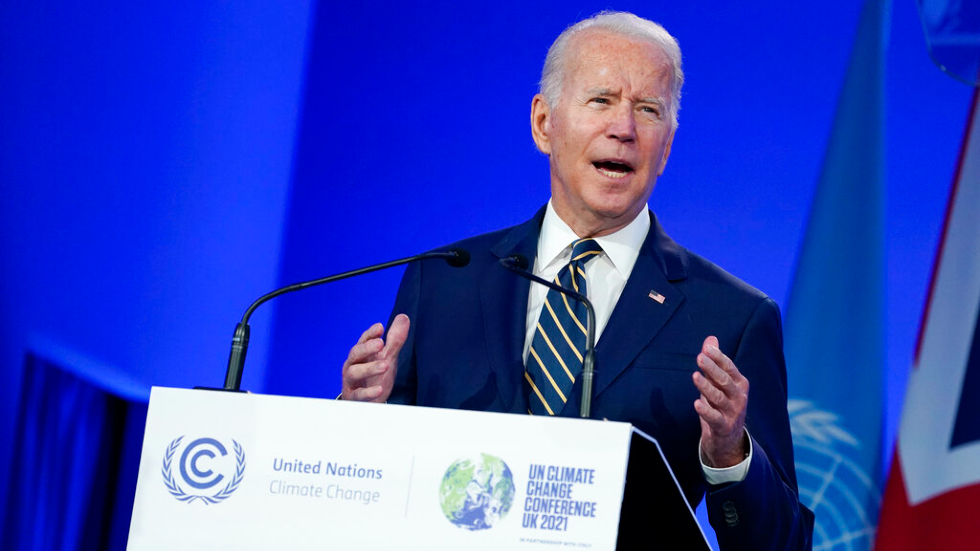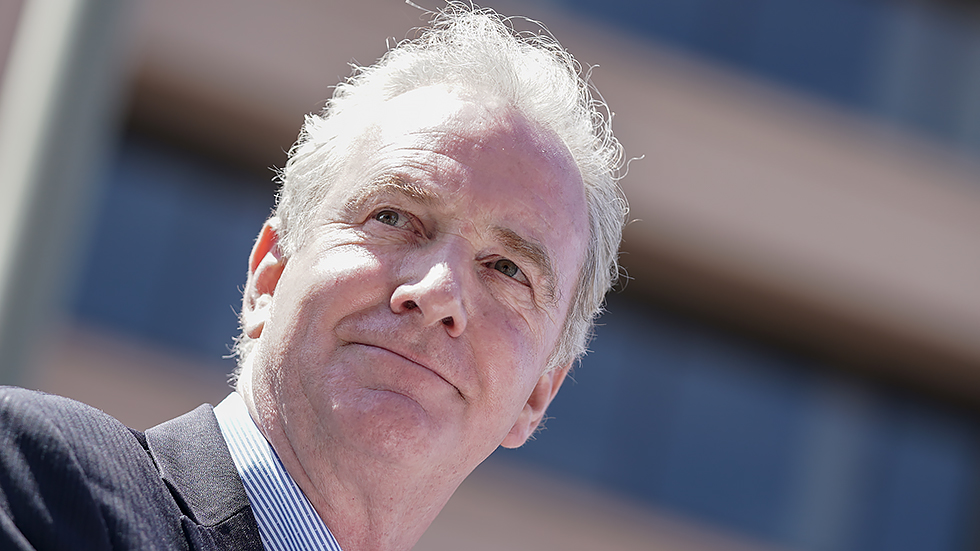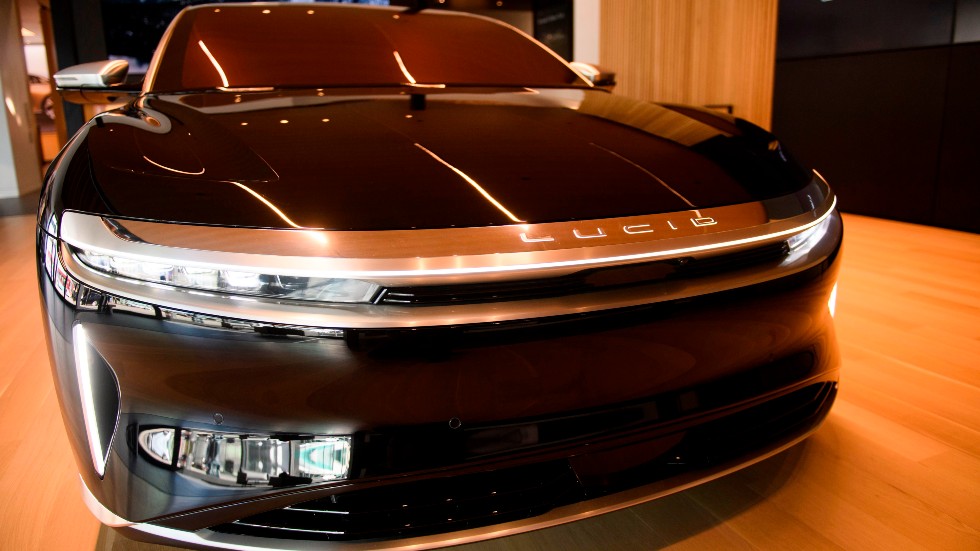Equilibrium/Sustainability — Presented by Delta — Electric airplane makes record-setting flight
Today is Monday. Welcome to Equilibrium, a newsletter that tracks the growing global battle over the future of sustainability. Subscribe here: digital-staging.thehill.com/newsletter-signup.
Pilot Gary Freedman has become the first person to fly an electric airplane across New Zealand’s Cook Strait, which separates the nation’s North and South Islands, The Associated Press reported.
“We had 40 percent left in the battery,” he told the AP after landing. “We could have almost flown back.”
The aircraft — a Pipistrel Alpha Electro — likely flew the greatest distance an electric plane has ever achieved over water, although the plane had to fly low and slow enough to preserve its charge, Wellington International Airport spokesperson Jenna Raeburn told the AP.
Within five years, 12-seater electric planes are expected to be making the hop over the Strait, Raeburn added.
The pilot timed his flight to coincide with the U.N. Climate Change Conference (COP26) in Glasgow — which opened on Monday morning with demands that the world’s largest emitters make more serious climate commitments, along with pleas for finance from developing countries.
Back in the U.S., we’ll look at one of the newest parts of President Biden’s Build Back Better plan: a green investment bank aimed at financing the nitty-gritty elements of the energy transition.
For Equilibrium, we are Saul Elbein and Sharon Udasin. Please send tips or comments to Saul at selbein@digital-staging.thehill.com or Sharon at sudasin@digital-staging.thehill.com. Follow us on Twitter: @saul_elbein and @sharonudasin.
Let’s get to it.
India makes net-zero pledge; France promises climate finance; Biden apologizes for Trump

The U.N. Climate Change Conference in Glasgow drew new vows from world leaders to address global warming, as well as an apology from President Biden over his predecessor’s policies.
Indian Prime Minister Narendra Modi said his country is committed to achieving net-zero emissions by 2070 and generating 50 percent of its power from renewable energy by 2030.
Modi, calling the pledges part of “a gift of five elixirs,” also vowed to increase India’s non-fossil fuel energy capacity to 500 gigawatts, reduce total projected carbon emissions by 1 billion tons and reduce the country’s carbon intensity by 45 percent — all by 2030.
Why is this announcement so pivotal? Just two weeks ago, India was among 24 developing countries to sign a statement criticizing global calls for net-zero emissions by 2050. Such a requirement would “exacerbate further the existing inequities between developed and developing countries,” the countries said.
India “is the only big economy in the world that has delivered both in letter and spirit on its Paris commitments,” according to Modi. Despite representing 17 percent of the world’s population, India generates only 5 percent of global emissions and “has spared no efforts in fulfilling its duty,” Modi said.
Which Paris commitments, again? Following COP21, held in Paris in 2015, each country submitted nationally determined contributions (NDCs), with an aim of keeping global warming below 1.5 degrees Celsius (2.7 degrees Fahrenheit).
“We are not yet where we need to get,” German Chancellor Angela Merkel said during her national statement at COP26, as covered by The Hill.
Emphasizing that “the impact of climate change is devastating,” Merkel suggested measuring national targets “in a more binding way,” to meet goals set in Paris by mid-century.
Climate finance for developing countries: Modi, meanwhile, called upon developed countries to make $1 trillion available for climate finance “as soon as today.”
“The promises made so far on climate finance have only proved to be hollow,” Modi said. “For many developing countries, climate change is a very big crisis looming before them, one that threatens their very existence.”
The hollow promises to which Modi was presumably alluding was a target set by developed countries in 2010 to mobilize $100 billion annually by 2020 for developing countries.
Merkel voiced her support for this effort but acknowledged that world leaders will only likely meet that goal by 2023.
A MESSAGE FROM DELTA
Because we believe you shouldn’t have to choose between seeing the world and saving the world. Learn more.
‘LEADERS NEED TO DO BETTER’
Economic opportunities: French President Emmanuel Macron stressed that the $100 billion mobilized for developing countries will need to be monitored with full transparency, to ensure that the places that need the money most are receiving it.
The funds, Macron said, could go toward protecting biodiversity and promoting economic trade solutions that are linked to the effort to combat climate change.
“Our solidarity through these $100 billion must make it possible for people to develop these industries, which are regional economic opportunities,” Macron added.
U.S. is “back at the table”: President Biden apologized during his address for the Trump administration’s withdrawal from the Paris Agreement, saying the move set the world back in the fight against climate change. Biden described the climate crisis as “the existential threat to human existence as we know it.”
The president said his administration would demonstrate that the U.S. is “not only back at the table but, hopefully, leading by the power of our example.”
Coming together: Canadian Prime Minister Justin Trudeau called upon all nations to come together as they have during the coronavirus pandemic and act with the same sense of urgency toward the climate crisis and biodiversity loss.
“We must demonstrate how we’ll deliver on the promise of Paris with transparency and accountability to the world’s most vulnerable,” Trudeau said. “To young people marching in our streets in cities around the world — we hear you. It’s true. Your leaders need to do better.”
Quotable: Prince Charles also invoked tough rhetoric at the climate confab: “We have to put ourselves on what might be called a warlike footing … We need a vast military-style campaign to marshal the strength of the global private sector with trillions at its disposal.”
Dems back ‘green bank’ proposal

Democrats are returning to an idea from the New Deal era to rapidly construct the green infrastructure needed for the energy transition: a green domestic development bank, which proponents say would unleash public and private money to build projects that the market currently isn’t funding.
In doing so, advocates say, it would help make green investments cheaper than fossil-fuel projects.
First steps: Last week, Democrats included the Clean Energy and Sustainability Accelerator proposal in the Build Back Better plan.
That marks a significant step forward for this longtime project of Sen. Chris Van Hollen (D-Md.), Sen. Ed Markey (D-Mass.) and Rep. Debbie Dingell (D-Mich.), which has passed the House three times since 2009 but failed to obtain Senate approval. Such an accelerator could help scale up state-level projects like the New York or California Green Banks to the national level.
What does it look like? The proposal would establish a $29 billion development fund — functionally a public bank — that would directly finance green projects.
Over the next 10 years, the bill’s authors say that investment will mobilize another $232 billion in community funding.
“What’s planned in the United States isn’t unique,” said Reed Hundt, CEO of the Coalition for Green Capital (GCG), noting that a British green development bank, for example, helped secure the financing that built up that country’s wind power in the North Sea.
But the U.S. proposal is “the biggest and most well-conceived version,” Hundt told Equilibrium.
Why? The accelerator would help bring a patchwork system of nearly two dozen experimental green banks — which the GCG helped set up in states like New York, Maryland, California and Connecticut — to cover the entire country.
That would make it possible for small businesses, nonprofits, neighborhoods and individual families to get capital for the kind of small-scale projects that will be essential to achieving the transition off fossil fuels — and that current systems of private capital aren’t set up to finance, Hundt said.
HOW IT ALL WORKS
Funding the neglected small-scale transition: Much of the necessary adaptation to a low-carbon economy has to happen at the level of $100,000 to $10 million projects, Hundt said — too big for small entities to easily afford, and too small for commercial banks to handle.
For example, when Hundt was on the board of the Connecticut Green Bank, that institution provided a church with a loan to rip out a fuel oil heater and replace it with an all-electric one. Other state green banks have made loans to community-scale solar — which might link 50-70 families with a network of rooftop photovoltaic panels. Or they might help a small shipping or construction business replace a fleet of a half-dozen heavy fossil fuel trucks with electric alternatives, Hundt said.
Bridging the gap: Businesses and nonprofits like these “don’t usually have access to capital,” Hundt said, and they also aren’t set up to apply for the tax credits that are intended to help persuade utility-scale customers to switch from coal plants to large-scale solar.
But once the green bank pays to electrify them, then they can benefit from utility-level tax credits that help bring clean power to the grid-scale.
A focus on justice: The accelerator is also the only part of the Build Back Better plan that focuses explicitly on bringing the 40 percent gains of clean energy spending to previously neglected communities, Ilmi Granoff, director of the Sustainable Finance program at Climateworks, told Equilibrium.
“It still serves commercialization, but does so in a way that reaches communities left out of the fossil fuel economy,” Granoff said. “That’s a cool feature that’s unique to this proposal.”
Last words: Of all the Build Back Better programs, the green accelerator is “one of the best value for money,” Granoff said. “It’s actually hard to score because it’s so useful to so many sectors.”
A MESSAGE FROM DELTA
Because we believe you shouldn’t have to choose between seeing the world and saving the world. Learn more.
Monday Miscellanies

Competitors for Tesla, a spat over an iconic New York park and another flight-pocalypse hits an airline.
Tesla has company in luxury electric vehicle markets
- Two luxury electric vehicle companies — Rivian and Lucid — rolled out their first vehicles to customers, opening the next phase of their attempt to take on Tesla, The Wall Street Journal reported.
- Both are backed by powerful players: Rivian by Amazon and Ford, and Lucid by Saudi Arabia’s sovereign wealth fund.
- But while getting cars to customers is an important milestone — both for Lucid’s $169,000 Air or Rivian’s $75,000 R1T — the next step is “just getting the volume ramped up and pushing like crazy,” Lucid chief executive Peter Rawlinson told the Journal.
- Electric vehicle sales climbed 57 percent in September over the previous year, according to Morgan Stanley, the Journal reported.
Squabble over New York’s East River Park rattles local neighborhoods
- New York City’s plans to rebuild East River Park on higher ground has led to a dispute over “green gentrification,” The Guardian reported.
- East River Park is one of the only waterfront green spaces within walking distance of Lower East Side public housing, but much of the park incurred damage during Hurricane Sandy, according to The Guardian.
- City planners have approved a $1.45 billion plan to bury the area under 8 feet of soil, and then reconstruct a park on higher ground — creating a buffer from storm surges, The Guardian reported.
- The East River Park Action group is concerned that the project will be “a kind of Trojan horse for gentrification” while eliminating green space, according to The Guardian.
- But some residents, however, say that the five years required to build the new park will be worth the decades of protection against floods, The Guardian reported.
American Airlines scraps 1,900 flights over the weekend
- American Airlines passengers were the latest to face travel disruptions, following the cancellation of more than 1,900 flights this weekend, The Wall Street Journal reported.
- Wind gusts late last week slowed arrival rates at the airline’s Dallas-Fort Worth Hub, chief operating officer David Seymour told employees, according to the Journal.
- Cancellations then “snowballed,” as crews weren’t in the right locations, the Journal reported.
- This marks the third major airline debacle since August, beginning with Spirit Airlines that month and then Southwest Airlines in October — with both carriers blaming weather and other factors for staff shortages, according to the Journal.
- Many airlines are still struggling to recover from cuts made earlier on in the pandemic.
- “Airlines found they overcompensated in terms of the cut they made to their fleets,” Vik Krishnan, an aviation consultant at McKinsey & Co, told the Journal. “You can’t fly planes, if you don’t have people to unload the bags that are on them, or people to check you in, or people to help you board an airplane safely.”
Please visit The Hill’s sustainability section online for the web version of this newsletter and more stories. We’ll see you on Tuesday.{mosads}
Copyright 2024 Nexstar Media Inc. All rights reserved. This material may not be published, broadcast, rewritten, or redistributed..













